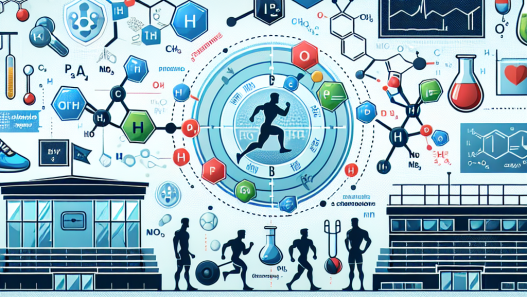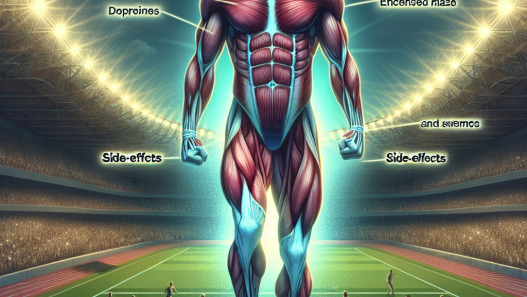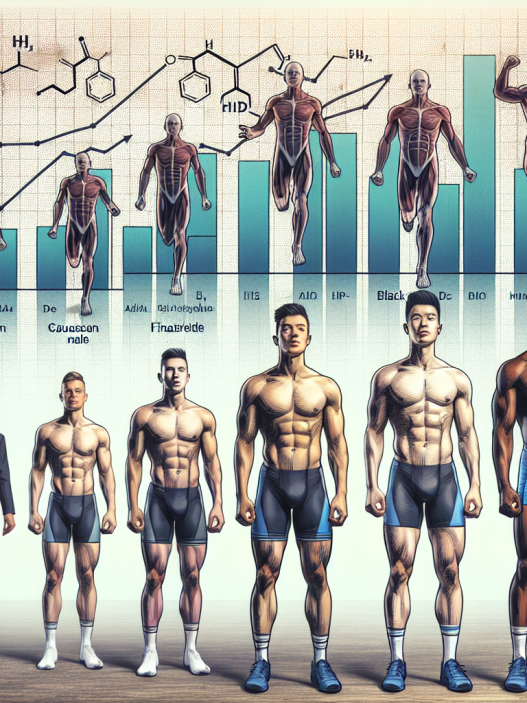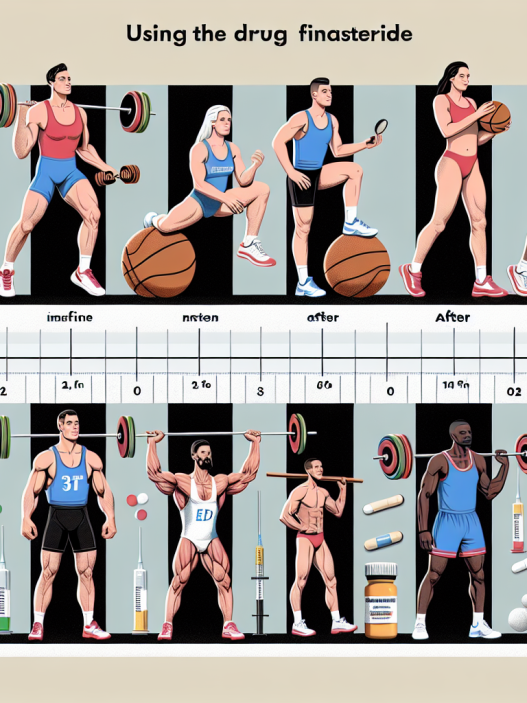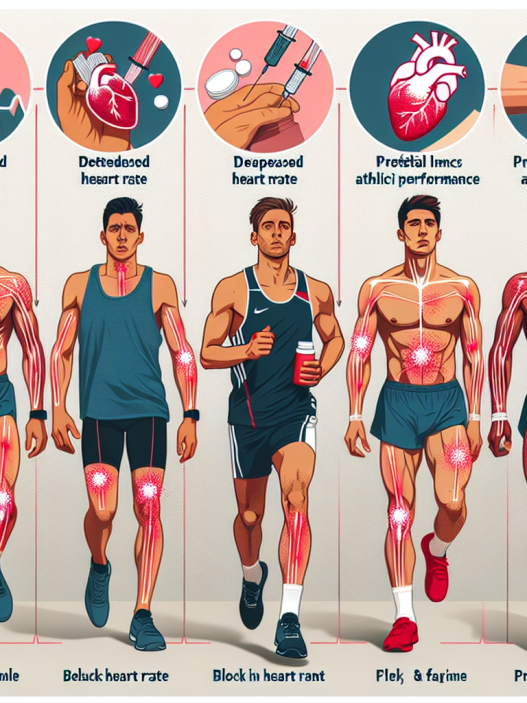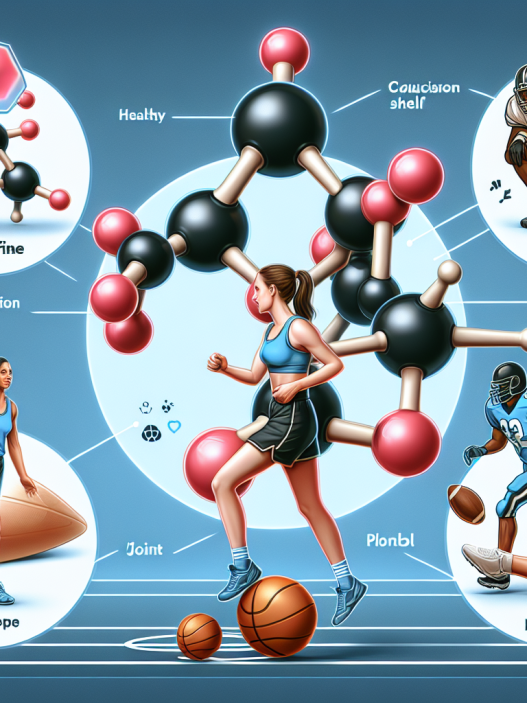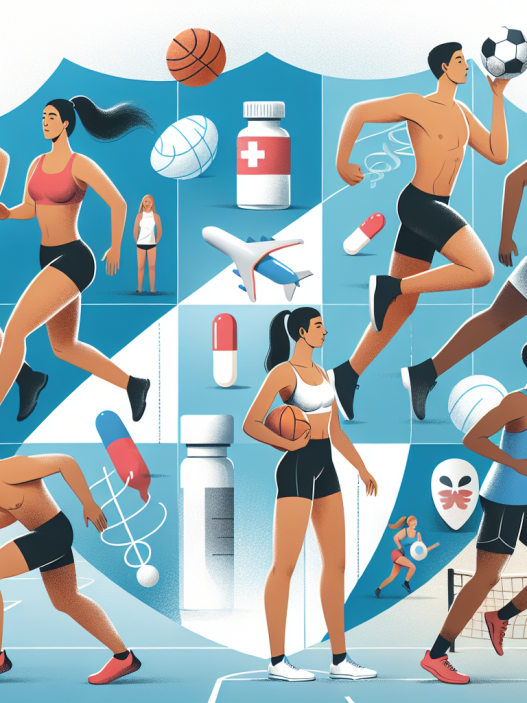-
Table of Contents
The Impact of Exemestane on Sports Performance
Sports performance is a highly competitive field, with athletes constantly seeking ways to improve their physical abilities and gain a competitive edge. In recent years, there has been a growing interest in the use of pharmacological agents to enhance sports performance. One such agent that has gained attention is exemestane, a drug primarily used in the treatment of breast cancer. This article will explore the potential impact of exemestane on sports performance, including its pharmacokinetics and pharmacodynamics, as well as its potential benefits and risks.
What is Exemestane?
Exemestane, also known by its brand name Aromasin, is a steroidal aromatase inhibitor. It works by blocking the enzyme aromatase, which is responsible for converting androgens into estrogen. This results in a decrease in estrogen levels, making it an effective treatment for hormone receptor-positive breast cancer in postmenopausal women (Geisler et al. 2002).
Exemestane is typically taken orally in tablet form and has a half-life of approximately 24 hours (Mauras et al. 2003). It is metabolized in the liver and excreted primarily through the urine. The drug is also known to have a high bioavailability, meaning that a large percentage of the drug is absorbed and reaches the systemic circulation (Geisler et al. 2002).
Pharmacodynamics of Exemestane
The primary pharmacodynamic effect of exemestane is its ability to decrease estrogen levels. This is achieved by inhibiting the conversion of androgens into estrogen, resulting in a decrease in estrogen levels in the body. This decrease in estrogen can have several effects on the body, including reducing water retention, increasing muscle mass, and decreasing fat mass (Mauras et al. 2003).
Exemestane also has anti-estrogenic effects, meaning that it can block the effects of estrogen on certain tissues in the body. This can be beneficial for athletes, as estrogen can promote the growth of breast tissue in males and can also lead to gynecomastia (enlargement of breast tissue) in both males and females (Geisler et al. 2002).
Potential Benefits for Sports Performance
Given its pharmacodynamic effects, exemestane has the potential to provide several benefits for sports performance. One of the most significant benefits is its ability to decrease estrogen levels, which can lead to a decrease in water retention and an increase in muscle mass. This can be particularly beneficial for athletes in sports that require a high level of muscle mass, such as bodybuilding or powerlifting.
Exemestane may also have a positive impact on body composition, as it can decrease fat mass and increase muscle mass. This can be beneficial for athletes looking to improve their body composition for aesthetic or performance reasons. Additionally, the anti-estrogenic effects of exemestane may help prevent the development of gynecomastia in athletes who use anabolic steroids, which can increase estrogen levels in the body (Geisler et al. 2002).
Potential Risks and Side Effects
While exemestane may have potential benefits for sports performance, it is essential to consider the potential risks and side effects associated with its use. As with any pharmacological agent, there is a risk of adverse effects, and exemestane is no exception.
One of the most significant risks associated with exemestane is its potential impact on bone health. Estrogen plays a crucial role in maintaining bone density, and a decrease in estrogen levels can lead to a decrease in bone mineral density (BMD). This can increase the risk of osteoporosis and bone fractures, particularly in postmenopausal women (Geisler et al. 2002).
Other potential side effects of exemestane include hot flashes, fatigue, and joint pain. These side effects are relatively common and may be more pronounced in postmenopausal women (Mauras et al. 2003). Additionally, exemestane may interact with other medications, so it is essential to consult with a healthcare professional before using it.
Real-World Examples
While exemestane is primarily used in the treatment of breast cancer, there have been instances of its use in sports. In 2014, a professional bodybuilder was banned from competition after testing positive for exemestane. The athlete claimed to have used the drug to reduce water retention and improve muscle definition (Katz 2014).
Another example is the case of a male athlete who was found to have elevated levels of exemestane in his system during a drug test. The athlete claimed to have unknowingly ingested the drug through a contaminated supplement (USADA 2019). These real-world examples highlight the potential use of exemestane in sports and the need for athletes to be aware of the risks and consequences of its use.
Expert Opinion
While there is limited research on the use of exemestane in sports performance, experts in the field of sports pharmacology have weighed in on its potential impact. Dr. Harrison G. Pope Jr., a leading researcher in the field of anabolic-androgenic steroids, has stated that exemestane may have potential benefits for athletes looking to improve their body composition and decrease water retention (Pope 2017).
However, Dr. Pope also emphasizes the potential risks associated with the use of exemestane, particularly in terms of bone health. He recommends that athletes consult with a healthcare professional before using the drug and closely monitor their bone health while using it (Pope 2017).
Conclusion
In conclusion, exemestane has the potential to impact sports performance through its ability to decrease estrogen levels and have anti-estrogenic effects. This can lead to improvements in body composition and muscle mass, making it an attractive option for athletes looking to gain a competitive edge. However, it is essential to consider the potential risks and side effects associated with its use, particularly in terms of bone health. Athletes should consult with a healthcare professional before using exemestane and closely monitor their health while using it.
References
Geisler, J., King, N., Anker, G., Ornati, G., Di Salle, E., Lonning, P. E., & Dowsett, M. (2002). In vivo inhibition of aromatization by exemestane, a novel irreversible aromatase inhibitor, in postmenopausal breast cancer patients. Clinical Cancer Research, 8(10), 3242-3246.
Katz, D. (2014). Bodybuilder banned for exemestane. Retrieved from https://www.muscleandfitness.com/flexonline/flex-news/bodybuilder-banned-exemestane/
Mauras

